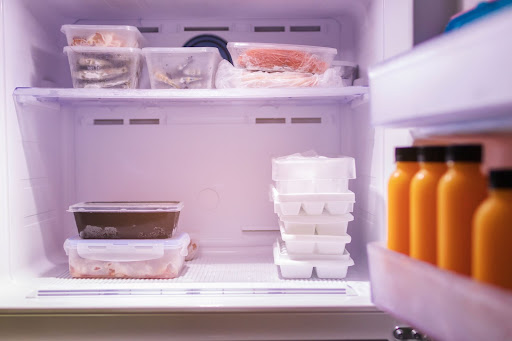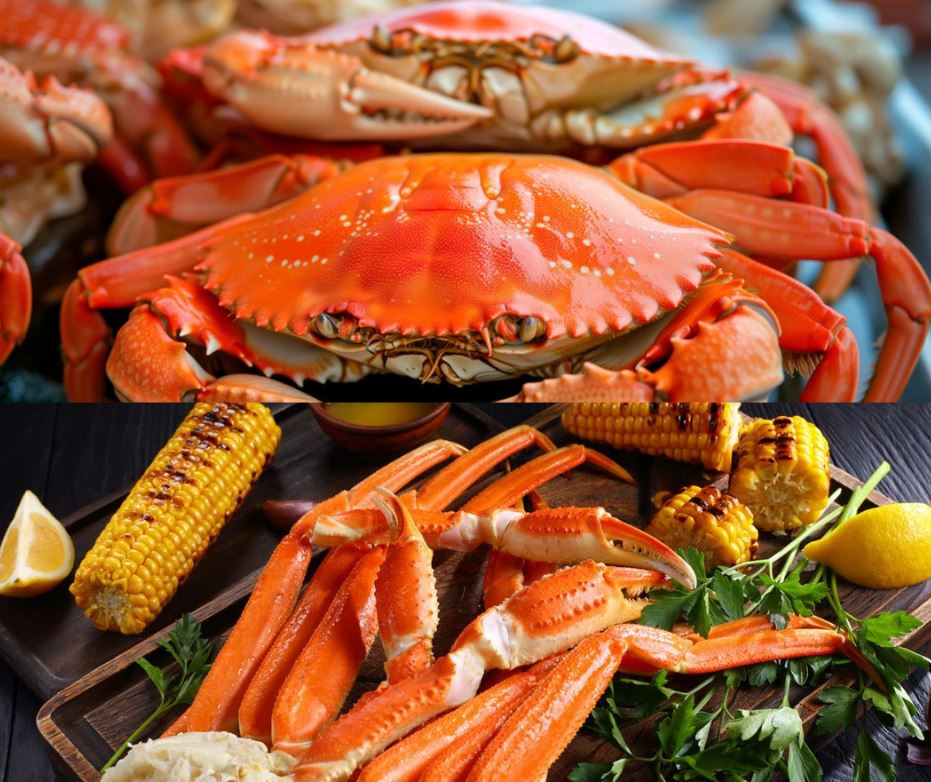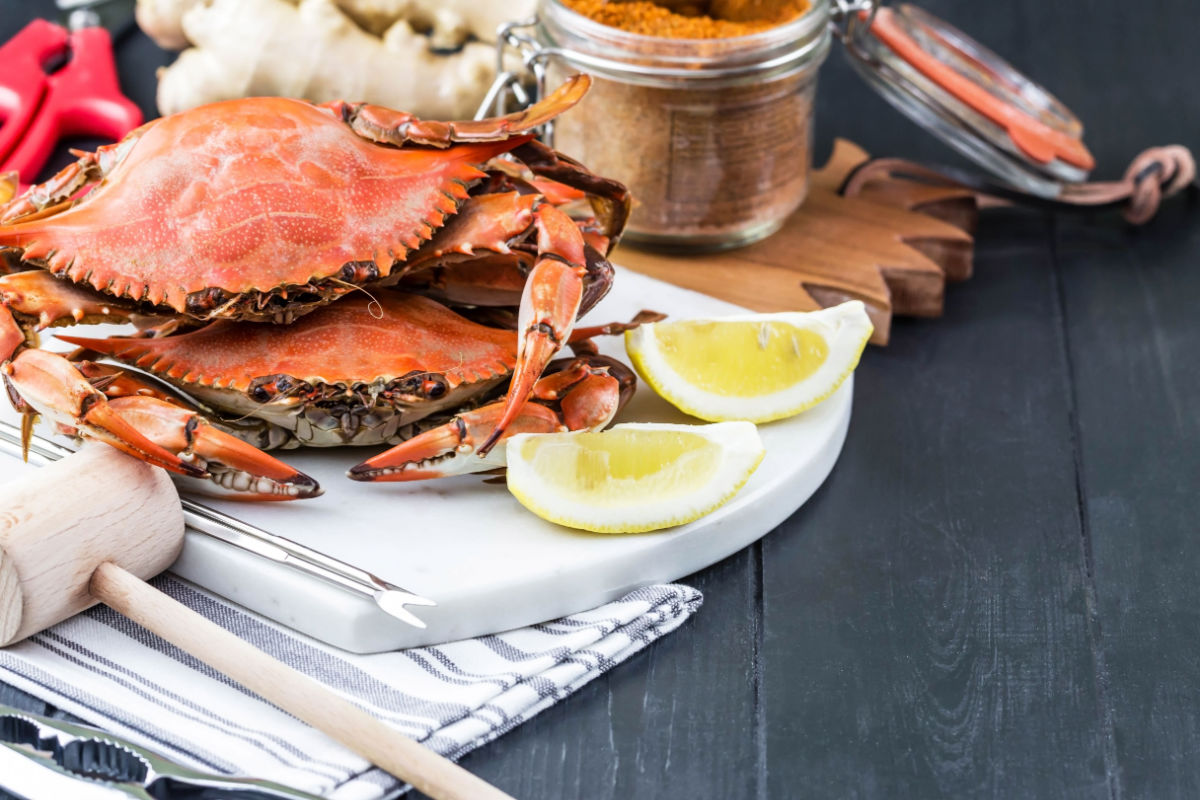
Your Ultimate Guide to Safe Seafood Storage
04/26/23 1:18PM
Are you considering crab delivery or another delicious seafood offering shipped right to your doorstep? It’s well worth it — we promise! However, many people are unsure of the proper storage procedures for seafood products, so although we always ship your order fresh, improper storage can result in your meal going bad before you even get to taste it. We don’t want anyone missing out on a scrumptious supper, so we’ve arranged a quick guide about how to store seafood properly. Read on to learn everything you need to know about storing live, cooked, and raw seafood!
Storing Live Seafood
Did you order live crabs? Live crabs should be cooked immediately after receiving them, so you shouldn’t need to store them for very long. However, if you’re planning on storing live crabs for any length of time longer than it takes to open the box and inspect your order, here’s what you should do:
- Purchase or borrow a cooler with a drain or spigot. Ensure the cooler is large enough to spread out the crabs with minimal overlap.
- Line the cooler with ice about one-third of the way full.
- Place a damp towel or several layers of damp newspaper on top of the cooler.
- Remove the cooler drain plug or open the spigot to allow drainage. Do not allow crabs to sit in standing water.
- Cover the ice with another cool, damp towel.
- Place crabs carefully into the cooler on top of the towel and ice.
- Place damp burlap or another damp towel over the top of the cooler.
- Leaving the lid open but covered (or propped open), place the filled cooler in a shady outdoor area with good ventilation. Aim the drain at the ground so that melting ice does not cause pooling.
- Add fresh cold ice as needed and regularly check to ensure the cooler drains any leftover cold water.
This method can keep crabs alive for around 48 hours if followed correctly. However, crabs can perish on ice if not handled properly. This usually occurs either due to a lack of oxygen or excessive exposure to standing water. To ensure adequate oxygen supply, open the top of the cooler slightly and place it in an area with good airflow. If the crabs need to be kept indoors, setting up a fan near the cooler may help provide sufficient ventilation.
Storing Raw Seafood
Storing raw seafood is a lot easier than storing live seafood, but it’s still important to handle raw fish, raw crabs, and other raw sea creatures with care to decrease the potential risk of foodborne illness. Here’s what you should know about storing raw crab, lobster, and other seafood delights.
Refrigerator
Fresh raw seafood should be stored in the refrigerator in an airtight container to prevent cross-contamination and reduce the risk of spoilage. Cook all refrigerated raw seafood within 2-3 days for optimal freshness and safety.
Freezer
For a longer shelf life, store raw seafood in the freezer. Seal the seafood in an airtight container to prevent contamination and oxidation. Place the container in the back of the freezer where it is coldest to slow down the growth of bacteria. For the best taste and texture, defrost frozen seafood before cooking. If you purchased seafood that is already frozen, immediately transfer it to your freezer upon opening the package, as frozen seafood should be kept frozen until ready to eat.
Storing Cooked Seafood
Seafood that is cooked or ready to eat has different storage requirements. Even though cooked seafood doesn’t pose the same risk of foodborne illness as raw seafood, it can still make you sick if it’s in your fridge long enough to gather bacteria.
Refrigerator
Cooked seafood can be stored in the refrigerator (in an airtight container, of course) for up to three days. So while leaving that leftover crab mac and cheese in any part of the refrigerator overnight is fine, ensure it has a lid — and don’t exceed three days.
Freezer
Cooked seafood can be stored in the freezer for up to three months but tastes best if eaten within one month. To store cooked seafood in the freezer, allow it to cool before placing it in an airtight plastic bag or wrap it tightly in several layers of plastic wrap or aluminum foil. Label the container with the date so you know when it was frozen, then place it in the coldest part of the freezer. When you’re ready to enjoy a seafood supper, thaw the frozen fish overnight in the refrigerator, using the defrost setting as necessary.
Seafood Prep Safety
Anytime you’re handling raw seafood, whether it’s live or ready to cook, keep these safety tips in mind:
- Use separate cutting boards, dishes, and cutlery for all raw products (seafood, poultry, beef, etc.) to minimize the risk of cross-contamination.
- Cooked crabs should reach an internal temperature of 145° F.
- Once you’re finished touching raw seafood, immediately wash your hands and all contaminated kitchenware in hot soapy water.
Ready to get cooking? Learn how to eat a blue crab now, or check out our blue crab recipes to start creating something incredible.
Get Blue Crabs Delivered Today!
We’re passionate about seafood here at Harbour House Crabs, and it shows in everything we do. From the moment you purchase crabs online with us to when they show up at your home, we guarantee that our seafood products have the best quality, freshness, and taste in the industry. Place an order with us today, and enjoy the delicious seafood you’ve been dreaming of tomorrow!





